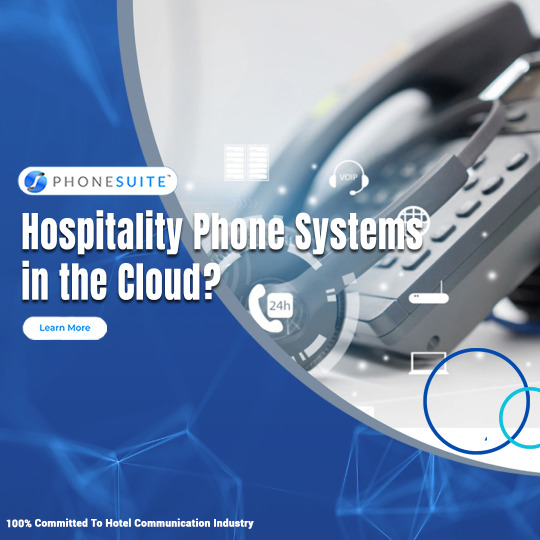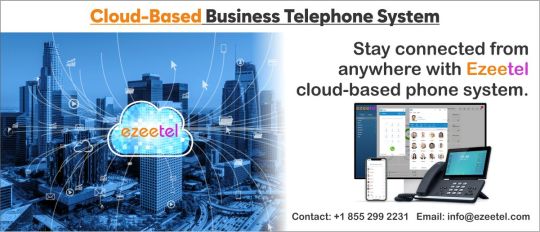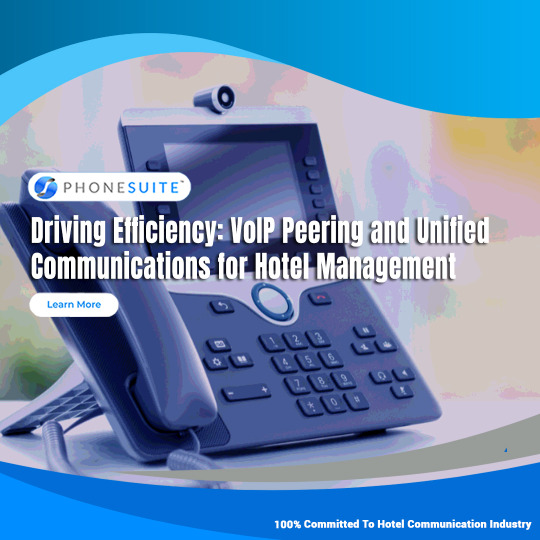#VoIP-based communications
Explore tagged Tumblr posts
Text
The Role of Personalized Voice Messaging in Financial Services and Banking
Developing real-time communication with clients is a major benefit of putting in place a voice call API. The instantaneity of a voice exchange offers a human touch that other communication channels might not be able to provide, whether it is answering a question, offering support, or providing tailored assistance. Companies can use this feature to increase customer satisfaction by resolving problems quickly and building dependability and trust. Sinch provides enterprise-level voice API solutions that businesses may easily include into their current CRM.

Voice-Based OTP Services
Voice-based OTP services are characters or numbers (OTP) sent through a phone call to verify a transaction or login session. Use the Voice OTP service to authenticate a user by calling a mobile phone and playing a number. The 2FA (Two-factor authentication) service is built on a world-class voice platform to provide reliable voice transmission worldwide. It is a completely API-based solution. Integrate your platform with the Sinch Voice OTP API and initiate real-time OTP calls with your consumers.
Best VoIP Service for Small Business
In today's fast-paced business environment, effective communication is essential for success, particularly for small enterprises trying to establish themselves. VoIP services have become a potent instrument for improving the effectiveness of communication. Business owners may make wise judgments if they are aware of the advantages of the best VoIP service for small businesses. Voice over Internet Protocol (VOIP) technology allows for both audio and video communication.
Voice API For Business Communication
Voice APIs enable developers to create custom calling solutions using their preferred language and the other available API tools. Beyond this capability, Voice API for business communication helps you experience further benefits, such as Complete Call Commands, Better Client Relationships, Smart API Convenience, and Multilingual Communication. Create the perfect communications solution tailored for your business to engage seamlessly through voice communications.
More Resources:
The Future of Outbound & Inbound Dialling Services
Improve Customer Satisfaction with Voice Calls
4 notes
·
View notes
Text

5G technology can offer advantages that have the potential to revolutionize the hotel landscape. Let’s take some time to dive deeper into how and why this next-generation wireless technology could have major implications for your business. Read More...
#voip technology#business phones#5G Technology#5G Network#Cloud technology#pbx system#voip advantages#phonesuite direct#voip phone#hotel hospitality#phonesuite dealers#hotel phone system#pbx communications#VoIP Protocol#SIP Protocol#Pms integration#Call Booking#Hotel Technology#Cloud Reservation System#Hotel industry#Business phones#Cloud-based#cloud based#Voip Service#Caller ID
2 notes
·
View notes
Text

Explore the Benefits of Cloud-Based Phone Systems for the Hospitality Industry: A comprehensive analysis of how cloud technology enhances communication efficiency, reduces costs, and improves guest experiences in hotels and restaurants. Learn More...
#hotel phone system#voip phone system#VoIP#cloud technology#hotel hospitality#hotel pbx#ip telephony#Cloud Telephony#Cloud Calling#VoIP Protocol#SIP Protocol#phonesuite#phonesuite voiceware#phonesuite pbx#Hotel industry#Communications#unified communications#VoIP system#Cloud-based#Voip service#Ip pbx
6 notes
·
View notes
Text
#Cloud Telephony#VoIP Services#Business Communications#Virtual Phone Systems#Small Business Technology#Technology Reviews#Telecommunications#SaaS (Software as a Service)#Customer Service Software#KrispCall#cloud telephony#VoIP#virtual phone numbers#business communications#phone system#call analytics#IVR#SMS#CRM integration#global calling#virtual office#remote work#small business#medium business#enterprise#telecommunications services#cloud-based phone system#call center software#customer service tools#business phone system
0 notes
Text
The Future of Communication is in the Cloud: Unleashing Cpass Advancements
In an era dominated by digital transformation, the way businesses communicate has undergone a remarkable evolution. Cloud technologies have emerged as the backbone of this transformation, enabling unprecedented connectivity and collaboration. At the forefront of this revolution is Cpass, a cutting-edge cloud communication platform for business in the USA designed to redefine the future of communication for businesses in the USA.
Cpass, short for Cloud Pass, is not just another acronym in the tech world. It represents a paradigm shift in the way cloud based phone systems for business in usa businesses approach communication systems. This section delves into the fundamentals of Cpass, exploring its architecture, capabilities, and the unique advantages it brings to the Voxvalley business landscape.
Discover how Cpass stands out with its advanced features, such as real-time communication, scalability, and seamless integration with existing systems. Learn how these features set the stage for a more efficient and dynamic communication landscape,
One of the primary concerns for businesses is security. Explore the robust security measures embedded in Cpass, cloud voip phone services in the USA ensuring that sensitive data is protected throughout the communication process. From end-to-end encryption to secure APIs, Cpass is designed to provide a safe and secure communication environment for businesses.
Unlock the potential of Artificial Intelligence within Cpass tailored for businesses. Discover how AI is seamlessly integrated to enhance communication experiences. From chatbots for customer support to predictive analytics, Cpass is at the forefront of intelligent communication solutions
Business Collaboration
Explore how Cpass is transforming the way businesses collaborate. From virtual meetings to collaborative document editing, businesses are leveraging Cpass to streamline communication and enhance productivity.
Embracing the Future of Best Cloud Communications Services in USA
As we navigate the evolving landscape of communication technologies in the USA, it's evident that Cpass is leading the charge. This section emphasizes the significance of adopting Cpass for businesses in the USA to stay ahead in the competitive digital space. The future of communication is indeed in the cloud, and Cpass is the key to unlocking its full potential for businesses in the USA.
Closing Thoughts
The blog post concludes by emphasizing the imperative for businesses in the USA to explore Cpass and leverage its advancements for a more efficient, secure, and intelligent communication future. As technology continues to evolve, embracing solutions like Cpass becomes not just a choice but a necessity for cloud based phone systems for business in the USA aiming to thrive in the dynamic world of communication.
#cloud communication platform for business in usa#cloud based phone systems for business in usa#cloud voip phone services in usa#best cloud communications services in usa#unified communications as a service provider in usa#cloud communications service developers in usa
0 notes
Text
Streamline Fax Communication with Axion Communications' VFAX Solutions
Modern VFAX solutions from Axion Communications will completely transform your fax communication experience. Embrace the comfort of virtual faxing and say goodbye to standard fax machines. We provide a safe and dependable platform for sending and receiving digital faxes through our VFAX service, doing away with the need for paper, ink, and phone lines. Experience how our VFAX system can simplify your document control processes while saving you cost. Join us as we explore the future of fax communication. Visit our website at https://www.axioncommunications.com/vfax/ to discover more about our VFAX services.
1 note
·
View note
Text
WHAT IS MOBILE ?
A mobile phone, or cell phone,[a] is a portable telephone that allows users to make and receive calls over a radio frequency link while moving within a designated telephone service area, unlike fixed-location phones (landline phones). This radio frequency link connects to the switching systems of a mobile phone operator, providing access to the public switched telephone network (PSTN). Modern mobile telephony relies on a cellular network architecture, which is why mobile phones are often referred to as 'cell phones' in North America.
Mobile phones also support a variety of multimedia capabilities, such as digital photography, video recording, and gaming. In addition, they enable multimedia playback and streaming, including video content, as well as radio and television streaming. Furthermore, mobile phones offer satellite-based service
The first handheld mobile phone was demonstrated by Martin Cooper of Motorola in New Y
Mobile phones are considered an important human invention as they have been one of the most widely used and sold pieces of consumer technology.[7] The growth in popularity has been rapid in some places, for example, in the UK, the total number of mobile phones overtook the number of houses in 1999.[8] Today, mobile phones are globally ubiquitous,[9] and in almost half the world's countries, over 90% of the population owns at least one.[10]
History
Main article: History of mobile phonesMartin Cooper of Motorola, shown here in a 2007 reenactment, made the first publicized handheld mobile phone call on a prototype DynaTAC model on 3 April 1973.In 2001, the third-generation (3G) was launched in Japan by NTT DoCoMo on the WCDMA standard.[15] This was followed by 3.5G or 3G+ enhancements based on the high-speed packet access (HSPA) family, allowing UMTS networks to have higher data transfer speeds and capacity. 3G is able to provide mobile broadband access of several Mbit/s to smartphones and mobile modems in laptop computers. This ensures it can be applied to mobile Internet access, VoIP, video calls, and sending large e-mail messages, as well as watching videos, typically in standard-definition quality.
By 2009, it had become clear that, at some point, 3G networks would be overwhelmed by the growth of bandwidth-intensive applications, such as streaming media.[16] Consequently, the industry began looking to data-optimized fourth-generation (4G) technologies, with the promise of speed improvements up to tenfold over existing 3G technologies. The first publicly available LTE service was launched in Scandinavia by TeliaSonera in 2009. In the 2010s, 4G technology has found diverse applications across various sectors, showcasing its versatility in delivering high-speed wireless communication, such as mobile broadband, the internet of things (IoT), fixed wireless access, and multimedia streaming (including music, video, radio, and television).
2 notes
·
View notes
Text

*astTECS offers world-class enterprise unified communication solutions based on Open Source Tech. We provide IP PBX, CCD, IVR, VoIP minutes, Voice logger, PA Systems, CRM solutions & more.
2 notes
·
View notes
Text
Reply.io is a sales engagement platform designed to help sales teams automate and manage their outreach efforts through multiple communication channels. It aims to streamline the process of engaging with prospects and customers, thereby increasing productivity and efficiency.
Below is a detailed review of its features and functionalities:
Key Features
Multi-Channel Outreach:
Email Campaigns: Automate and personalize email sequences to reach prospects effectively.
Phone Calls: Integrates with VoIP services to facilitate direct calling from the platform, including features like call recording and logging.
Social Media: Allows outreach via LinkedIn, including automated message sequences.
SMS and WhatsApp: Supports text-based outreach through SMS and WhatsApp for more direct communication channels.
Automation and Sequencing:
Automated Workflows: Create automated workflows that sequence multiple touch points across different channels.
Conditional Logic: Use conditional steps to branch sequences based on recipient behavior, such as email opens or replies.
Task Automation: Automate repetitive tasks such as follow-ups, reminders, and updating CRM records. Personalization and AI:
Email Personalization: Use dynamic fields to personalize email content, increasing engagement rates.
AI-Powered Suggestions: AI tools provide suggestions for improving email content and outreach strategies.
Personalized Videos: Integrates with video messaging tools to include personalized video content in emails.
Integration and API:
CRM Integration: Seamlessly integrates with major CRM systems like Salesforce, HubSpot, and Pipedrive, ensuring data synchronization.
API Access: Provides API access for custom integrations and automations, allowing for greater flexibility.
Third-Party Tools: Connects with various other tools such as Zapier, Slack, and Google Apps to enhance functionality.
Analytics and Reporting:
Campaign Analytics: Detailed analytics on email open rates, reply rates, click-through rates, and more.
A/B Testing: Test different versions of emails to determine which performs better.
Team Performance: Track team performance metrics to identify areas for improvement and optimize outreach efforts.
Contact Management:
Lead Management: Centralized database for managing contacts and leads, with segmentation and filtering options.
Enrichment: Automatic data enrichment to enhance lead profiles with relevant information.
Prospect Importing: Easily import contacts from CSV files or directly from integrated CRM systems.
Pros Comprehensive Multi-Channel Outreach: Supports a variety of communication channels, providing a holistic approach to sales engagement.
Advanced Automation and Sequencing: Powerful automation features help streamline workflows and increase efficiency.
Deep Personalization: Tools for email and video personalization improve engagement and response rates.
Robust Integration Capabilities: Seamless integration with CRM systems and other third-party tools enhances data synchronization and workflow automation.
Detailed Analytics: Comprehensive reporting and analytics provide insights into campaign performance and team productivity.
Cons Complexity: The extensive features and customization options can be overwhelming for new users, requiring a learning curve to fully utilize the platform.
Cost: Pricing can be relatively high, especially for smaller businesses or startups with limited budgets.
Limited Free Tier: The free tier offers limited functionality, which may not be sufficient for more extensive outreach needs.
Reply.io is a powerful and versatile sales engagement platform that offers a comprehensive suite of tools for multi-channel outreach, automation, and personalization. Its robust integration capabilities and detailed analytics make it an excellent choice for sales teams looking to optimize their engagement strategies and improve productivity. However, the complexity and cost may pose challenges for smaller organizations or those new to such platforms. Overall, Reply.io provides significant value for businesses seeking to enhance their sales outreach and engagement efforts.
4 notes
·
View notes
Text
How Does a Cloud-Based Business Telephone System Work? Solving Communication Challenges for Modern Businesses

Introduction
In today's fast-paced business world, seamless communication is the lifeblood of any successful organization. Traditional phone systems have their limitations, making it crucial for businesses to adopt modern solutions that can keep up with the demands of the digital era. Enter Ezeetel Telecommunication, a leading provider of cloud-based Business Telephone Systems. In this blog post, we will explore how Ezeetel's cutting-edge technology works, and how it addresses the communication challenges faced by businesses today.
Understanding the Basics of a Cloud-Based Business Telephone System
A cloud-based Business Telephone System, also known as Voice over Internet Protocol (VoIP), revolutionizes the way organizations communicate. Unlike conventional landline systems, where communication is routed through physical phone lines, VoIP operates over the internet, transmitting voice data as packets. Ezeetel leverages the power of cloud computing to deliver a robust, reliable, and scalable telecommunication solution to businesses of all sizes.
The Inner Workings of Ezeetel's Business Telephone System
Virtualization of Phone Infrastructure: Ezeetel replaces the need for bulky, on-premises hardware with a virtual phone infrastructure hosted in the cloud. This means businesses no longer need to invest in expensive telephone exchange equipment, reducing both upfront costs and maintenance expenses.
Seamless Call Routing and Management: With Ezeetel's cloud-based system, incoming calls are efficiently routed to the intended recipients, regardless of their location. Advanced call management features, such as call forwarding, auto-attendants, and interactive voice response (IVR) systems, ensure that every call is handled professionally.
Scalability and Flexibility: As businesses grow, so do their communication needs. Ezeetel's solution is highly scalable, allowing companies to add or remove phone lines effortlessly. This flexibility ensures that the system can adapt to organizational changes without major disruptions.
Unified Communication: Ezeetel integrates various communication channels, including voice, video, and messaging, into a single platform. This unified communication approach streamlines internal collaboration and enhances external interactions with clients and partners.
Mobility and Remote Work Support: In an increasingly remote and mobile work environment, Ezeetel's Business Telephone System shines. Employees can use their smartphones, laptops, or desktop computers to access the system from anywhere with an internet connection, ensuring uninterrupted connectivity.
Solving Communication Challenges for Businesses
Ezeetel's Business Telephone System addresses several critical challenges faced by modern businesses:
Cost-Effectiveness: By eliminating the need for costly on-premises equipment and offering competitive pricing, Ezeetel significantly reduces the overall telecommunication expenses for businesses.
Reliability and Redundancy: The cloud-based infrastructure ensures high system availability, with built-in redundancy to minimize downtime. Businesses can rest assured that their communication channels remain operational at all times.
Enhanced Collaboration: With integrated voice, video, and messaging features, Ezeetel fosters seamless communication and collaboration among team members, boosting productivity and efficiency.
Business Continuity: In case of natural disasters or emergencies, Ezeetel's cloud-based system ensures that communication remains intact, allowing businesses to continue operations without disruption.
Global Reach: Ezeetel's VoIP system enables businesses to establish virtual phone numbers in multiple countries, expanding their reach and providing a localized experience for customers worldwide.
Conclusion
In conclusion, Ezeetel's cloud-based Business Telephone System represents the next generation of telecommunication solutions, empowering businesses with unparalleled communication capabilities. By virtualizing phone infrastructure, enhancing collaboration, and addressing the challenges of modern communication, Ezeetel enables organizations to thrive in today's dynamic business landscape. Embrace the power of cloud-based telephony and take your business communication to new heights with Ezeetel Telecommunication.
#cloud-based Business Telephone System#Business Telephone System#canada#cloud PBX for small business canada
2 notes
·
View notes
Text
The Benefits of Integrating Text-to-Speech Technology for Personalized Voice Service
Sinch is a fully managed service that generates voice-on-demand, converting text into an audio stream and using deep learning technologies to convert articles, web pages, PDF documents, and other text-to-speech (TTS). Sinch provides dozens of lifelike voices across a broad set of languages for you to build speech-activated applications that engage and convert. Meet diverse linguistic, accessibility, and learning needs of users across geographies and markets. Powerful neural networks and generative voice engines work in the background, synthesizing speech for you. Integrate the Sinch API into your existing applications to become voice-ready quickly.

Voice Service
Voice services, such as Voice over Internet Protocol (VoIP) or Voice as a Service (VaaS), are telecommunications technologies that convert Voice into a digital signal and route conversations through digital channels. Businesses use these technologies to place and receive reliable, high-quality calls through their internet connection instead of traditional telephones. We at Sinch provide the best voice service all over India.
Voice Messaging Service
A Voice Messaging Service or System, also known as Voice Broadcasting, is the process by which an individual or organization sends a pre-recorded message to a list of contacts without manually dialing each number. Automated Voice Message service makes communicating with customers and employees efficient and effective. With mobile marketing quickly becoming the fastest-growing advertising industry sector, the ability to send a voice broadcast via professional voice messaging software is now a crucial element of any marketing or communication initiative.
Voice Service Providers in India
Voice APIs, IVR, SIP Trunking, Number Masking, and Call Conferencing are all provided by Sinch, a cloud-based voice service provider in India. It collaborates with popular telecom companies like Tata Communications, Jio, Vodafone Idea, and Airtel. Voice services are utilized for automated calls, secure communication, and client involvement in banking, e-commerce, healthcare, and ride-hailing. Sinch is integrated by businesses through APIs to provide dependable, scalable voice solutions.
More Resources:
The future of outbound and inbound dialing services
The Best Cloud Communication Software which are Transforming Businesses in India
4 notes
·
View notes
Text

In this blog post, we look at some emerging trends in 4G/5G/6G technology and explore how embracing them can help you develop your business into the hotel of tomorrow. Read More...
#voip technology#pbx system#5G and 6G#VoIP#5G network#6G Network#Cloud VoIP#VoIP Solution#voip provider#voip services#hotel phone system#voip phone#phonesuite dealers#phonesuite direct#voip advantages#hotel hospitality#business voip#voip solutions#SIP Protocol#Cloud-based#cloud based solutions#Cloud#business phones#pbx communications#cloudcomputing#Unified communications
0 notes
Text

In this post, we take an in-depth look into just how valuable VoIP peering and Unified Communications solutions are for hospitality organizations today by improving communication quality, reducing costs, and enabling seamless collaboration across various departments. Learn More...
#cloud technology#unified communications#hotel pbx#hotel hospitality#hotel phone system#phonesuite pbx#voiceware by phonesuite#phonesuite voiceware#hotel phone installation#ip telephony#Ip phone#Telephony#cloud telephony#VoIP system#Softphone#Cloud-based#Voip service#Communications#telephonysolutions
6 notes
·
View notes
Text
Oh here's some more, drawing on my experience both growing up during the last days of landline phones' relevance, and my previous job working for a telecom company that still provides (VoIP) landline service:
In some parts of the country, it was entirely possible for one building to have two phone lines that were in different calling areas, and thus using one to call the other counted as long distance. I know this was particularly common with Frontier Communications in my area - any call to a number on another exchange was considered long-distance, even if those two exchanges were for the same area or at least overlapping areas.
Corded landline phones would typically get their power from the phone line, rather than being hooked up to your home's electricity. This meant that even if your power was out, you could still have phone service if the phone lines were intact. As VoIP-based phone services came to exist in the 2000s when broadband internet service became more common, and started to become the default for landline service during the 2010s, this benefit was lost.
In parts of the US and I presume Canada as well where there's only one area code, you don't need to manually enter the area code to call local numbers. You only need the three digit exchange number and the four digit line number. To this day, it's not unheard of for some older folks in more rural parts of the US to not even know their own area code, since they only ever give out their number to people locally.
Have been thinking a lot lately about how, when a new technology emerges, people who were born after the shift have trouble picturing exactly what The Before was like (example, the fanfic writer who described the looping menu on a VHS tape), and even people who were there have a tendency to look back and go "Wow, that was... wild."
Today's topic: The landline. A lot of people still have them, but as it's not the only game in town, it's an entirely different thing now.
(Credit to @punk-de-l-escalier who I was talking to about this and made some contributions)
for most of the heyday of the landline, there was no caller ID of any kind. Then it was a premium service, and unless you had a phone with Caller ID capability-- and you didn't-- you had to buy a special box for it. (It was slightly smaller than a pack of cigarettes.)
Starting in the early nineties, there WAS a way to get the last number dialed, and if desired, call it back. It cost 50 cents. I shit you not, the way you did it was dialing "*69". There's no way that was an accident.
If you moved, unless it was in the same city-- and in larger cities, the same PART of the city-- you had to change phone numbers.
As populations grew, it was often necessary to take a whole bunch of people and say "Guess what? You have a new area code now."
The older the house, the fewer phone jacks it had. When I was a kid, the average middle-class house had a phone jack in the kitchen, and one in the master bedroom. Putting in a new phone jack was expensive... but setting up a splitter and running a long phone cord under the carpet, through the basement or attic, or just along the wall and into the next room was actually pretty cheap.
Even so, long phone cords were pretty much a thing on every phone that could be conveniently picked up and carried.
The first cordless phones were incredibly stupid. Ask the cop from my hometown who was talking to his girlfriend on a cordless phone about the illegal shit he was doing, and his wife could hear the whole thing through her radio.
For most of the heyday of the landline, there was no contact list. Every number was dialed manually. Starting in the mid-eighties, you could get a phone with speed dial buttons, but I cannot stress how much they sucked, because you had to label them with a goddamn pencil, you only had ten or twenty numbers, reprogramming them was a bitch, and every once in a while would lose all of the number in its memory.
All of the phone numbers in your city or metro area were delivered to you once a year in The Phone Book, which was divided between the White Pages (Alphabetic), the Yellow Pages (Businesses, by type, then alphabetic), and the Blue Pages (any government offices in your calling area (which we will get to in a moment)).
Listing in the white pages was automatic; to get an unlisted number cost extra.
Since people would grab the yellow pages, find the service they need, and start calling down the list, a lot of local business names where chosen because they started with "A", and "Aardvark" was a popular name.
Yes, a fair chunk of the numbers in it were disconnected or changed between the time it was printed and it got to your door, much less when you actually looked it up.
One phone line per family was the norm.
Lots and lots and LOTS of kids got in trouble because their parents eavesdropped on the conversation by picking up another phone connected to the same line.
A fair number of boys with similar voices to their father got in trouble because one of their friends didn't realize who they were talking to.
And of course, there were the times where you couldn't leave the house, because you were expecting an important phone call.
Or when you were in a hotel and had to pay a dollar per call. (I imagine those charges haven't gone away, but who pays them?)
Since you can't do secondary bullet points, I'll break a couple of these items out to their own lists, starting with Answering Machines.
these precursors to voicemail were a fucking nightmare.
The first generation of consumer answering machines didn't reach the market until the mid-eighties. They recorded both the outgoing message and the incoming calls onto audio cassettes.
due to linear nature of the audio cassette, the only way to save an incoming call was to physically remove the cassette and replace it with a new one.
they were prone to spectacular malfunction; if the power went out, rather than simply fail to turn back on, they would often rewind the cassette for the incoming messages to the beginning, because it no longer knew where the messages were, or how many there were.
Another way they could go wrong was to start playing the last incoming call as the outgoing message.
Most people, rather than trying to remember to turn it on each time they went out and turn it off when they got back, would just leave it on, particularly when they discovered that you could screen incoming calls with it.
Rather a lot of people got themselves in trouble because they either didn't get to the phone before the answering machine, or picked up when they heard who was calling, and forgot that the answering machine was going-- thus recording some or all of the phone call.
Eventually the implemented a feature where you could call your answering machine, enter a code, and retrieve your messages. The problem was that most people couldn't figure out how to change their default code, and those that did didn't know it reset anytime the power went out. A guy I went to college with would call his ex-girlfriend's machine-- and her current boyfriend's-- and erase all the messages. He finally got busted when she skipped class and heard the call come in.
And, of course, there's the nightmare that was long-distance.
Calls within your local calling area were free. (Well, part of the monthly charge.) This usually meant the city you lived in and its suburbs. Anything outside this calling area was an extra per-minute charge.
This charge varied by time of day and day of the week, which made things extra fun when your friend on the west coast waited until 9pm for the lower charges, but you were on the east coast and it was midnight.
Depending on your phone company, and your long distance plan, the way your long distance work varied wildly. Usually in-state was cheaper-- with zones within the state that varied by price, and out of state had its own zones.
Your long distance plan came in lots and lots of distracting packages, and was billed to your phone bill.
At one point, when I was living in North Carolina, a scammer set themselves up as a long distance company and notified the phone company that a shitload of people had switched to their service. They got caught fairly quickly, but I was annoyed because they were actually charging less than AT&T.
"Would you like to change your long distance plan" was the 80's and 90's equivalent of "We have important news about your car insurance."
Had a friend who lived at the edge of a suburb in Birmingham, and for her to call her friend two miles down the street was long-distance, because the boundary of the calling area was right between them.
13K notes
·
View notes
Text
Setting Up Your SBC to optimize Maximum Microsoft Teams Performance

Introduction
In present day quick-paced digital world, establishments are increasingly counting on strong conversation methods to be sure delicate operations. One of sbc the such a lot trendy platforms in this regard is Microsoft Teams, a collaboration instrument that enables teams to talk and work jointly seamlessly. However, to completely leverage its talents, businesses customarily desire to incorporate a Session Border Controller (SBC). This article will delve into the intricacies of developing your SBC for prime Microsoft Teams efficiency, guiding you because of the procedure and featuring insights that show off our competencies on this domain.
What is an SBC?
A Session Border Controller (SBC) is a relevant portion in VoIP (Voice over Internet Protocol) networks. It acts as a gatekeeper among extraordinary networks, coping with the signaling and media streams fascinated in voice and video communications.
Key Functions of an SBC Security: SBCs shield opposed to loads of threats comparable to denial-of-service assaults and eavesdropping. Interoperability: They facilitate conversation among distinct VoIP approaches. Quality of Service: SBCs can prioritize traffic to be certain super audio and video calls. Session Management: They maintain call setup, administration, and teardown. Why Use an SBC with Microsoft Teams?
Integrating an SBC with Microsoft Teams enhances telephony abilities by way of permitting Direct Routing. This permits groups to connect their latest telephony infrastructure with Microsoft Teams.
Benefits of Using SBC with Teams Cost Efficiency: Reduce telephony expenses by means of leveraging latest PSTN (Public Switched Telephone Network) connections. Flexibility: Choose from a variety of supported SBCs tailor-made on your business enterprise's demands. Enhanced Security: Protect delicate records at the same time making sure compliance with guidelines. Microsoft Teams Direct Routing Explained
Understanding Microsoft Teams Direct Routing is critical for every person trying to integrate an SBC successfully. Direct Routing allows for establishments to attach their SIP trunking service promptly with Microsoft Teams.
How Does Direct Routing Work? An incoming or outgoing call is routed through the user's Microsoft Teams Jstomer. The call is then sent to the SBC, which manages routing based on pre-configured regulations. Finally, the SBC connects the decision to both the PSTN or a different SIP endpoint. Supported SBCs for Microsoft Teams Direct Routing
When when you consider that organising your SBC for ideal Microsoft Teams efficiency, it be central to settle upon from supported models. Some great chances embody:
| Vendor | Supported Models | |--------------------|-------------------------------| | AudioCodes | Mediant 800B/1000B | | Ribbon Communications | EdgeMarc Series | | Cisco | Cisco Unified Border Element | | Oracle | Oracle Session Border Controller |
Setting Up Your SBC for Optimal Microsoft Teams Pe
youtube
0 notes
Text
What is VoIP? Understanding the Future of Voice Communication
In today’s fast-paced digital world, communication technologies have evolved rapidly — and one of the most transformative innovations is VoIP (Voice over Internet Protocol). This modern solution has revolutionized the way individuals and businesses connect across the globe. But what exactly is VoIP, and why is it becoming the go-to choice for voice communication?
Modern VoIP services offer excellent call quality and reliability, provided you have a stable and fast internet connection. With advancements like HD voice, QoS (Quality of Service), and encryption protocols, VoIP is now trusted by enterprises, call centers, and even governments worldwide.
About Company
At Saif Telecommunications, we are redefining the standards of communication in the International Voice/SMS industry. As one of the fastest-growing carriers, we specialize in Retail and Wholesale Voice/SMS aggregation and terminations, delivering cutting-edge solutions that empower businesses globally.
What is VoIP?
VoIP (Voice over Internet Protocol) is a technology that enables voice communication and multimedia sessions over the internet. Unlike traditional phone systems, which rely on analog lines, VoIP converts voice into digital signals and transmits them through the web.
Benefits of VoIP:
Cost Savings: VoIP significantly reduces call costs, especially for long-distance and international calls.
Scalability: Easily add or remove lines based on your team size without major infrastructure changes.
Mobility: Employees can make and receive calls from anywhere using a mobile app or softphone.
Feature-Rich: VoIP systems come with features like call recording, auto-attendants, voicemail-to-email, and integration with CRM systems.
The Role of SMS in Business Communication
Despite the rise of chat apps and email, SMS remains one of the most reliable and immediate forms of communication. With a 98% open rate and most texts read within minutes, SMS is a powerful tool for reaching customers and employees.
Use Cases for SMS:
Customer Support: Provide real-time updates and assistance through SMS.
Marketing Campaigns: Send promotions, offers, and reminders with high visibility.
Notifications and Alerts: Keep users informed about transactions, appointments, or system updates.
The Future of Telecom: Smart, Cloud-Based, and Integrated
The evolution of telecommunications is clearly moving towards cloud-based, integrated platforms. VoIP and SMS are no longer standalone tools—they're key components of a broader communication strategy that empowers businesses to be more agile, efficient, and customer-centric.
Follow us On Social Media Platform
Instagram - https://www.instagram.com/saiftelecommunicationspteltd/
LinkedIn - https://www.linkedin.com/company/saiftelecommunications/
Facebook - https://www.facebook.com/saiftelecommunicationspteltd
Twitter - https://x.com/saiftelecomm
Pinterest - https://www.pinterest.com/saiftelecommunicationspteltd/
Website - https://www.saiftelecommunication.com/
#Saiftelecommunication #Saiftelecommunications #Saiftelecommunicationspteltd #Telecom #Telecommunication #telecommunicationcompany #telecommunicationindustry #telecommunicationsector #Telecommunications #telecommunicationscompany #telecommunicationscompanyinasia #telecommunicationscompanyineurope #telecommunicationscompanyinhongkong #telecommunicationscompanyinkuwait #telecommunicationscompanyinsingapore #telecommunicationsindustry #telecommunicationssector #DigitalInfrastructure #telecomsevent #Telecom #Voice #KuwaitIGW #TelecomNetworking #CompanyJourney2025 #Dubai #kuwait #singapore #middleeast #Telecommunications #Networking #Innovation #KeepingTheWorldConnected #middleeast #africa #uk #us #europe #aisa #china #hingkong #austraila #germany #kenya #Telecomusa #telecomkuwait
#telecom#telecommunications#telecomindustry#telecommunication worldwide#telecommunication services#telecommunication global#telecommunication
0 notes